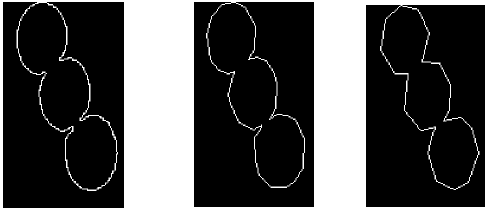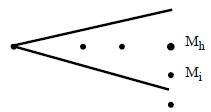Computational Geometry
[Image Segmentation]
This group contains engines capable of transforming images into geometric objects. More...
Classes | |
| class | SoCenterLineApproximation3d |
 SoCenterLineApproximation3d engine More... SoCenterLineApproximation3d engine More... | |
| class | SoObjectToSegmentApproximation2d |
 SoObjectToSegmentApproximation2d engine More... SoObjectToSegmentApproximation2d engine More... | |
| class | SoPolylineExtrusionApproximation3d |
 SoPolylineExtrusionApproximation3d polyline approximation. More... SoPolylineExtrusionApproximation3d polyline approximation. More... | |
| class | SoPolylineResamplerApproximation2d |
 SoPolylineResamplerApproximation2d polyline approximation. More... SoPolylineResamplerApproximation2d polyline approximation. More... | |
| class | SoPolylineResamplerApproximation3d |
 SoPolylineResamplerApproximation3d polyline approximation. More... SoPolylineResamplerApproximation3d polyline approximation. More... | |
| class | SoQuadrilateralMeshSlicerApproximation3d |
 SoQuadrilateralMeshSlicerApproximation3d engine More... SoQuadrilateralMeshSlicerApproximation3d engine More... | |
| class | SoSurfaceFittingApproximation3d |
 SoSurfaceFittingApproximation3d surface approximation. More... SoSurfaceFittingApproximation3d surface approximation. More... | |
| class | SoSurfaceUnfoldingProcessing3d |
 SoSurfaceUnfoldingProcessing3d engine More... SoSurfaceUnfoldingProcessing3d engine More... | |
Detailed Description
This group contains engines capable of transforming images into geometric objects.
Introduction to segment objects
Contour chaining involves representing edge lines as a list of consecutive pixels. This change in the representation, called vectorization, is most suitable for binary lines of one pixel thickness resulting from the SoZeroCrossingsProcessing2d or SoGradientLocalMaximaProcessing2d commands.
Although many applications do not require vectorized edges, it results in a vast reduction of data, and it provides a representation more suitable for some algorithms. In particular, it is possible to process chains with computational geometry algorithms or 1D signal processing operators, and to solve problems that have a better formulation within these theories.
A chain consists of a list of adjacent pixels of an edge lying between two free ends, two triple points, or a free end and a triple point, as represented in Figure 1. Chains are oriented, and the orientation may be a function of the gradient. Each chain has a header containing information such as the size, the numbers of the previous or next connected chains, etc..

Figure 1: Chains representation
It makes data far less dependent on the digitization to approximate these chains as polygons composed of linear segments, as in Figure 2. This results in another reduction of data. A compression ratio of 1:50 from the original data is common. It is then possible to perform computations that would be otherwise very long.

Figure 2: Polygonal approximation with different value of angle
There are many algorithms to find polygonal approximations of chains. We shall outline a polygonal approximation scheme based on cone covering.
Let  be an angle and
be an angle and  the first point of the chain:
the first point of the chain:
1. For each point  , a cone
, a cone  of summit
of summit  , of axis
, of axis  and of angle
and of angle  can be defined;
can be defined;
2. Let  be the intersection of the
be the intersection of the  's
's  : if
: if  is not empty, starting from
is not empty, starting from  , one can search for
, one can search for  , the first point for which the distance to the axis of
, the first point for which the distance to the axis of  is a local minimum. The point
is a local minimum. The point  is then examined (back to 1).
is then examined (back to 1).

Figure 3: Polygonal approximation based on the cone covering
3. If  is empty, the last point
is empty, the last point  is retained as the end of the segment.
is retained as the end of the segment.  is then replaced by
is then replaced by  and the next end can be determined.
and the next end can be determined.

Figure 4: Chain definition
The parameter  can be interpreted as a scale factor. A small angle picks up short ranged variations in curvature and yields many segments. A large angle produces few segments but the resulting approximation is blind to local details. The choice of a relevant
can be interpreted as a scale factor. A small angle picks up short ranged variations in curvature and yields many segments. A large angle produces few segments but the resulting approximation is blind to local details. The choice of a relevant  depends very much on the problem being studied.
depends very much on the problem being studied.